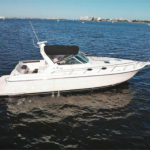 When purchasing a boat, one of the most important steps to take is having a thorough inspection conducted by a professional marine surveyor 33454. Suncoast Marine Surveying, located in Florida, has been providing comprehensive marine surveys for over a decade. One crucial aspect of a boat inspection is assessing the condition of the interior woodwork and joinery. Here are some tips on how to ensure a thorough inspection of these components.
When purchasing a boat, one of the most important steps to take is having a thorough inspection conducted by a professional marine surveyor 33454. Suncoast Marine Surveying, located in Florida, has been providing comprehensive marine surveys for over a decade. One crucial aspect of a boat inspection is assessing the condition of the interior woodwork and joinery. Here are some tips on how to ensure a thorough inspection of these components.
1. Hire a Qualified Marine Surveyor 33454
The first step in ensuring a proper inspection of interior woodwork and joinery is to hire a qualified marine surveyor. Suncoast Marine Surveying employs experienced professionals who have the knowledge and expertise to thoroughly inspect all aspects of a boat’s structure.
2. Conduct a Visual Inspection
During the survey, the marine surveyor will conduct a visual inspection of the interior woodwork and joinery. This includes examining the walls, ceilings, floors, cabinets, trim, and any other wooden components inside the boat. Any signs of rot, water damage, or deterioration should be noted.
3. Check for Mold and Mildew
Mold and mildew can be common problems with wooden components on boats, especially in areas that are prone to moisture. The marine surveyor will carefully inspect for any signs of mold or mildew growth and assess the extent of the damage. Proper ventilation and maintenance are essential in preventing mold and mildew from developing.
4. Assess the Condition of the Wood
The marine surveyor will also assess the overall condition of the wood used in the interior of the boat. This includes checking for warping, cracking, splitting, and other types of damage that could compromise the structural integrity of the vessel. The type of wood used, as well as its age and maintenance history, will also be taken into consideration.
5. Test for Moisture Content
Moisture content is another important factor to consider when inspecting interior woodwork and joinery. High levels of moisture can indicate leaks or other issues that need to be addressed. The marine surveyor 33454 may use specialized tools such as moisture meters to test for moisture content in the wood.
6. Inspect Joinery and Seams
Properly joined woodwork is crucial for maintaining the structural integrity of a boat. The marine surveyor will carefully inspect all joints, seams, and fasteners to ensure they are secure and in good condition. Loose or deteriorating joinery can lead to leaks, water intrusion, and other problems down the line.
7. Look for Evidence of Pests
Wooden components are vulnerable to pest infestations, such as termites or wood-boring beetles. The marine surveyor will look for any signs of pest damage, including holes, tunnels, frass (insect excrement), or live insects. If evidence of pests is found, it is important to address the issue promptly to prevent further damage.
8. Document Findings
Throughout the inspection process, the marine surveyor will document their findings in a detailed report. This report will include descriptions and photographs of any issues discovered during the inspection, as well as recommendations for repairs or maintenance. Having this documentation is essential for negotiating repairs or price adjustments with the seller.
In conclusion, ensuring a thorough inspection of interior woodwork and joinery is essential when purchasing a boat. Hiring a qualified marine surveyor like Suncoast Marine Surveying can help identify potential issues and provide valuable insights into the condition of wooden components on the vessel. By following these tips and conducting a comprehensive inspection, you can make an informed decision about your boat purchase and enjoy many years of safe and enjoyable boating adventures.


